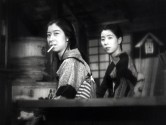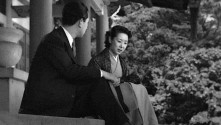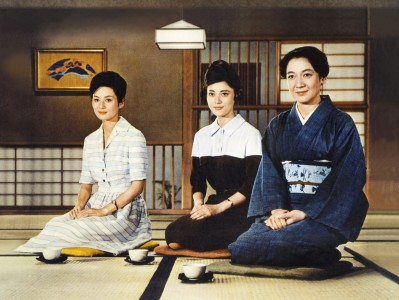
What Did the Lady Forget? is a special title in Ozu’s filmography because it sets out to be a comedy of manners, depicting the lives of the wealthy with a more satirical bent. The film’s bourgeois characters—not Ozu’s first, but his most opulent—are surrounded by reminders of their wealth: golf clubs, cakes, English homework, shopping bags. Chain-smoking, hard-drinking Setsuko (Kuwano Michiko) visits her rich uncle Komiya (Saito Tatsuo), whose socialite wife Tokiko (Kurishima Sumiko) loathes Setsuko’s newfangled ways. Komiya and Setsuko bond over a mutual resentment of Tokiko, but between them there is a surprising difference: Setsuko argues that Komiya must put his wife in her place—advice that belies her self-styling as a modern woman, and which makes the film’s title even more mystifying. Because the characters’ petty disagreements revolve around how to best spend one’s free time—for instance, whether to golf or go to a Ginza bar—the film implicitly invokes Ozu’s blue-collar characters who cannot afford such luxuries. Though Ozu does not exactly skewer the rich, he cleverly underscores the ideological contradictions and compromises that hold their identities in place.
Part of film series
Screenings from this program
Late Spring

Tokyo Story

Early Summer

Passing Fancy

Dragnet Girl

Tokyo Story

A Story of Floating Weeds

Days of Youth

The Flavor of Green Tea over Rice

Early Spring

The Munekata Sisters

Floating Weeds

Good Morning

Late Autumn

Tokyo Twilight

The Brothers and Sisters of the Toda Family

I Flunked, But …

Late Autumn

Where Now Are the Dreams of Youth?

The End of Summer

Early Spring

Café Lumière

Tokyo Story





















